This post contains affiliate links. This means I will make a commission at no extra cost to you should you click through and make a purchase [ “As an Amazon Associate, I earn from qualifying purchases.” ]. Read the full disclosure here.
Toyota Dashboard Symbols and Meanings GuideMechanic.Com As a Toyota car owner, understanding the various symbols on your dashboard is essential for ensuring the safety and functionality of your vehicle.
These symbols serve as indicators for various car systems, alerting you to potential issues or providing important information.
In this blog article, we will provide a detailed and comprehensive guide to help you decipher the meaning behind the dashboard symbols found in Toyota vehicles.
Before we delve into the specific symbols, it’s important to note that every Toyota model may have slightly different symbols and meanings.
However, many symbols are common across most Toyota vehicles, and we will cover those in detail. By familiarizing yourself with these symbols, you will be better equipped to respond appropriately and take necessary action when needed.
See Also: Toyota Camry Check Engine Light
Toyota Dashboard Symbols and Meanings
Engine Oil Pressure Warning
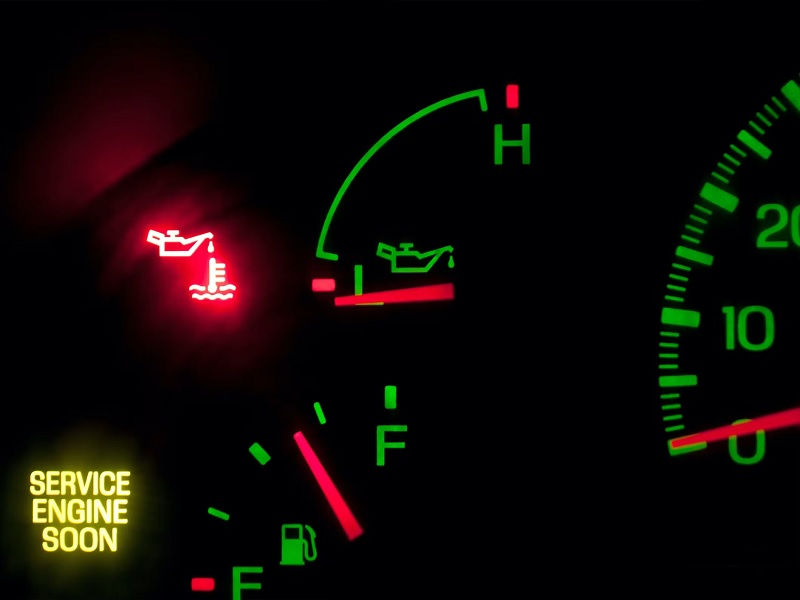
When you see the engine oil pressure warning symbol illuminated on your Toyota dashboard, it resembles an oil can, indicating a problem with the engine oil pressure.
This warning is crucial as it alerts you to potential engine damage or failure if not addressed promptly. Several factors can trigger this warning, such as low oil level, a faulty oil pump, or a clogged oil filter.
It is essential to check your engine oil level immediately and add oil if necessary. If the oil level is adequate, you should have your vehicle inspected by a qualified mechanic to diagnose and rectify the underlying issue.
Possible Causes of Engine Oil Pressure Warning
Check out this LUCKYMAN CLUB 2 Front Tacoma Seat Covers Custom Fit 2016-2023 Tacoma Crew Cab and Extended Cab (Black 2 pcs)
There are several potential causes for the engine oil pressure warning symbol to illuminate on your Toyota’s dashboard. Here are some common reasons:
- Low engine oil level: Insufficient oil can lead to reduced oil pressure, triggering the warning symbol.
- Oil pump malfunction: A faulty oil pump may not generate adequate pressure, causing the warning light to activate.
- Clogged oil filter: A blocked oil filter can restrict oil flow, resulting in low oil pressure.
- Oil viscosity issues: Using the wrong grade of oil can affect its ability to maintain proper pressure.
Steps to Take When Engine Oil Pressure Warning Light Appears
If the engine oil pressure warning light illuminates on your Toyota dashboard, follow these steps:
- Check your engine oil level: Park your vehicle on a level surface, turn off the engine, and wait for a few minutes for the oil to settle. Locate the engine oil dipstick, usually labeled with a bright-colored handle, and pull it out. Wipe the dipstick clean, reinsert it fully, and then pull it out again. Check the oil level; it should be within the designated range.
- Add oil if necessary: If the oil level is below the recommended range, add the appropriate type and amount of oil according to your vehicle’s specifications. Refer to your owner’s manual for guidance.
- Have your vehicle inspected: If the oil level is adequate, the warning light may indicate a more significant issue. It is advisable to have your vehicle examined by a qualified mechanic who can diagnose and resolve the underlying problem.
Toyota Dashboard Symbols and Meanings
Battery Warning
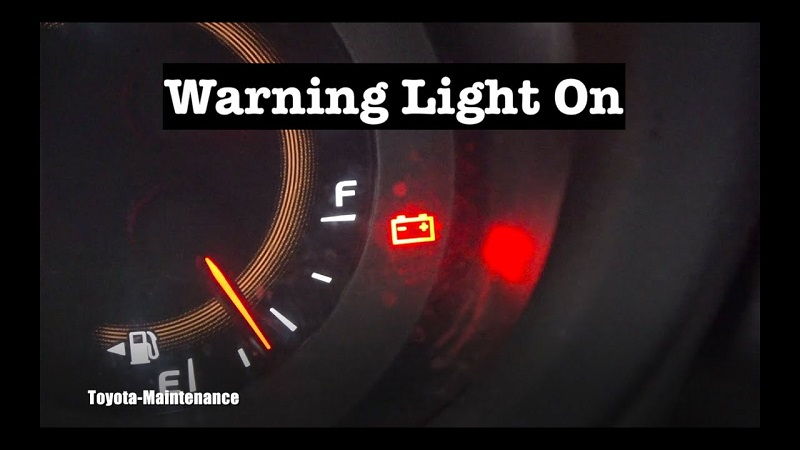
When the battery warning symbol appears on your Toyota’s dashboard, it indicates an issue with your vehicle’s charging system. Ignoring this warning can result in a dead battery and potentially leave you stranded.
The battery warning symbol typically resembles a rectangular shape with positive and negative signs, indicating a problem with the battery or alternator. Several factors can trigger this warning, including a faulty battery, a malfunctioning alternator, or a loose or damaged battery connection.
Possible Causes of Battery Warning
Here are some potential causes for the battery warning symbol to illuminate on your Toyota’s dashboard:
- Malfunctioning alternator: The alternator charges the battery while the engine is running. A faulty alternator may not supply sufficient power to the battery, triggering the warning light.
- Dead or faulty battery: A weak or dead battery can cause the battery warning symbol to activate. Over time, batteries lose their ability to hold a charge and may need replacement.
- Loose or damaged battery connection: If the battery terminals are loose, corroded, or damaged, it can disrupt the electrical connection and trigger the warning light.
Steps to Take When Battery Warning Light Appears
If the battery warning light illuminates on your Toyota dashboard, follow these steps:
- Check battery connections: Start by inspecting the battery terminals and cables for any signs of looseness, corrosion, or damage. If necessary, tighten the connections carefully or clean off any corrosion.
- Check battery voltage: Using a multimeter, you can measure the voltage across the battery terminals. A fully charged battery should typically read around 12.6 volts. If the voltage is significantly lower, the battery may need charging or replacement.
- Check alternator functionality: While the engine is running, use the multimeter to measure the voltage across the battery terminals again. A properly functioning alternator should provide a reading between 13.5 and 14.5 volts. If the voltage is below or above this range, the alternator may be faulty and require inspection by a professional.
- Visit a professional technician: If you are unable to identify or resolve the issue, it is advisable to consult a qualified mechanic who can diagnose and repair the problem accurately.
Toyota Dashboard Symbols and Meanings
Tire Pressure Monitoring System (TPMS) Warning
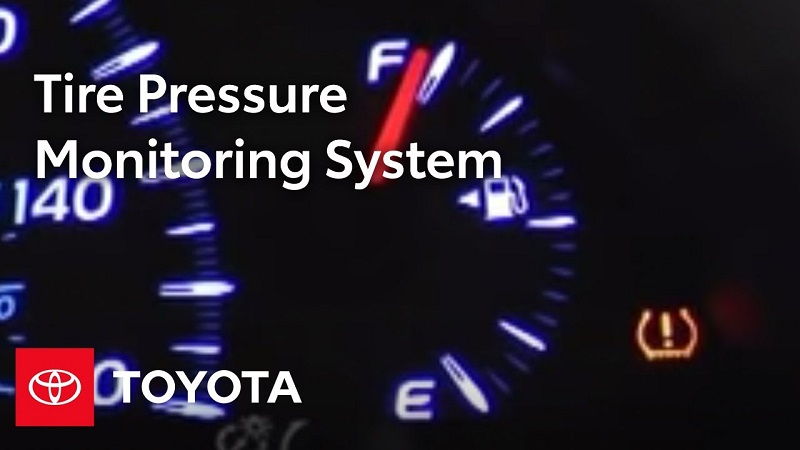
The TPMS warning symbol, often shaped like a tire with an exclamation mark, alerts you to low tire pressure in one or more of your Toyota vehicle’s tires. Maintaining proper tire pressure is crucial for your safety, tire longevity, and fuel efficiency.
The TPMS continuously monitors tire pressure and triggers the warning symbol when it detects a significant drop in pressure below the recommended levels. Factors such as temperature changes, punctures, or gradual air loss over time can cause tire pressure to decrease.
Importance of Maintaining Proper Tire Pressure
Proper tire pressure is essential for several reasons:
- Safety: Adequate tire pressure ensures optimal traction, stability, and handling, especially during emergency maneuvers or on wet or slippery roads.
- Tire longevity: Underinflated or overinflated tires can cause uneven tread wear, reducing tire life and potentially leading to premature tire failure.
- Fuel efficiency: Incorrect tire pressure can increase rolling resistance, forcing the engine to work harder and consume more fuel.
Steps to Take When TPMS Warning Light Appears
If the TPMS warning light illuminates on your Toyota dashboard, follow these steps:
- Check tire pressure manually: Use a tire pressure gauge to measure the air pressure in each tire, including the spare. Refer to your vehicle’s owner’s manual or the sticker on the driver’s side door jamb for the recommended tire pressure values.
- Inflate or deflate tires as needed: If any of the tires have low pressure, add air using a suitable air compressor until they reach the recommended levels. Conversely, if the tires are overinflated, release air until they reach the proper pressure.
- Inspect tires for damage: While checking the tire pressure, visually inspect the tires for any signs of punctures, cuts, bulges, or excessive wear. If you notice any damage, have the tire inspected or replaced by a professional.
- Reset the TPMS system: After adjusting the tire pressures, some Toyota models require a reset of the TPMS system to clear the warning light. Refer to your owner’s manual for instructions on how to perform the reset procedure.
- Seek professional assistance: If the TPMS warning light persists despite adjusting the tire pressures and performing a reset, it is advisable to visit a qualified tire technician who can diagnose and resolve any underlying issues.
Toyota Dashboard Symbols and Meanings
Brake System Warning
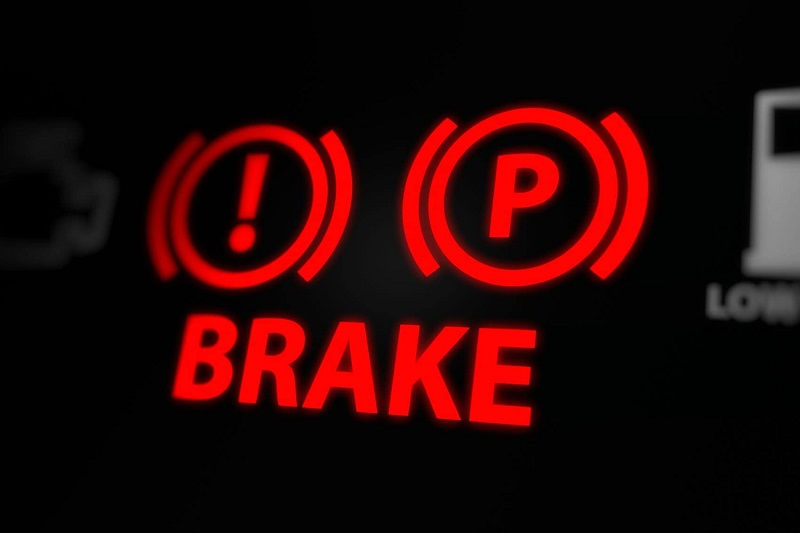
When you see the brake system warning symbol illuminate on your Toyota’s dashboard, it indicates a problem with your vehicle’s braking system.
The brake system is a critical safety component, and any issues should be addressed immediately to ensure your safety on the road.
See Also: Catalytic Converter For Toyota Sequoia
The brake system warning symbol typically depicts an exclamation mark inside a circle, suggesting a general brake system malfunction.
Several factors can trigger this warning, including low brake fluid, worn brake pads, or a malfunctioning braking system component.
Possible Causes of Brake System Warning
Here are some potential causes for the brake system warning symbol to illuminate on your Toyota’s dashboard:
- Low brake fluid level: A low brake fluid level can indicate a leak in the braking system or worn brake pads. This can compromise the effectiveness of the brakes.
- Worn brake pads: Over time, brake pads wear down and require replacement. If the brake pads are worn beyond their recommended thickness, it can trigger the warning light.
- Brake system component malfunction: Faulty brake system components, such as the brake calipers, master cylinder, or ABS module, can trigger the warning light.
Steps to Take When Brake System Warning Light Appears
If the brake system warning light illuminates on your Toyota dashboard, follow these steps:
- Check brake fluid level: Locate the brake fluid reservoir under the hood of your Toyota. Ensure that the brake fluid level is between the minimum and maximum marks. If it is below the minimum mark, it may indicate a leak in the braking system, and you should have it inspected by a professional.
- Check brake pads: Inspect the brake pads through the wheel spokes or by removing the wheels. Look for signs of excessive wear, such as thin brake pad material or a metal-on-metal grinding noise when braking. If the brake pads are worn beyond the recommended thickness, they should be replaced.
- Check for leaks: Examine the brake lines, calipers, and other braking system components for any signs of leakage, such as fluid drips or wetness. If you notice a leak, do not drive the vehicle and have it towed to a certified mechanic for repairs.
- Reset the warning light: In some cases, after addressing the underlying issue, the brake system warning light may persist. Consult your owner’s manual or seek professional assistance to properly reset the warning light.
- Seek professional assistance: If you are unable to identify or resolve the issue, it is crucial to visit a qualified mechanic who can inspect and repair the brake system to ensure your safety on the road.
Toyota Dashboard Symbols and Meanings
Malfunction Indicator Lamp (Check Engine Light)
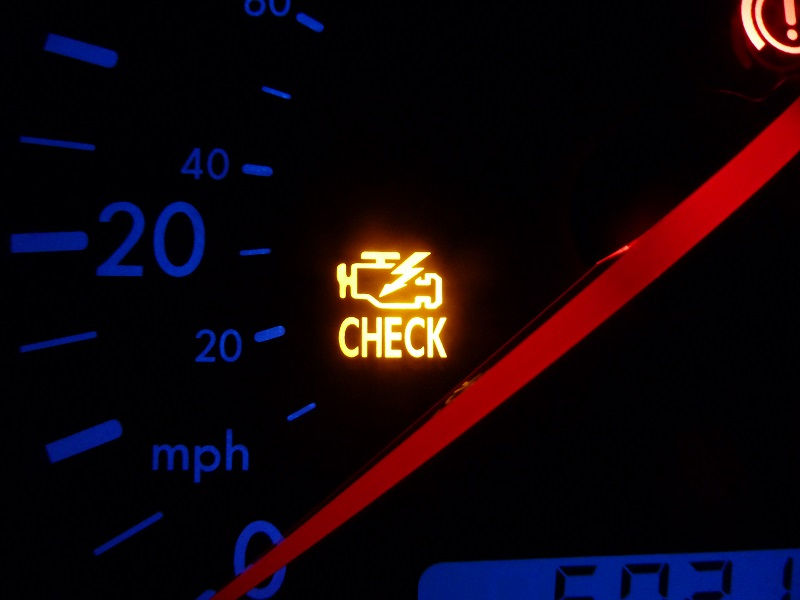
The Malfunction Indicator Lamp (MIL), commonly known as the check engine light, is one of the most recognizable symbols on a Toyota’s dashboard.
When this light illuminates, it signifies a potential issue with the vehicle’s engine or emissions system. The check engine light can be triggered by various factors, ranging from minor issues like a loose gas cap to more significant problems like a malfunctioning sensor or catalytic converter.
Common Reasons for Check Engine Light Activation
Here are some common reasons for the check engine light to illuminate on your Toyota’s dashboard:
- Loose or faulty gas cap: A loose or damaged gas cap can cause fuel vapor to escape, triggering the check engine light.
- Malfunctioning oxygen sensor: The oxygen sensor monitors the oxygen levels in the exhaust system. A faulty sensor can lead to poor fuel efficiency or emissions issues.
- Failed catalytic converter: The catalytic converter helps reduce harmful emissions. A malfunctioning converter can trigger the check engine light and may result in reduced engine performance.
- Ignition system problems: Issues with the ignition coils, spark plugs, or spark plug wires can cause misfires and trigger the check engine light.
- Mass airflow sensor malfunction: The mass airflow sensor measures the amount of air entering the engine. A malfunctioning sensor can affect fuel mixture and engine performance.
Steps to Take When Check Engine Light Appears
If the check engine light illuminates on your Toyota dashboard, follow these steps:
- Check the gas cap: Start by ensuring that the gas cap is properly tightened. If it is loose or damaged, tighten it or replace it with a new one.
- Check for noticeable issues: Look for any visible signs of damage or loose connections in the engine bay. However, keep in mind that many check engine light triggers may not have visible symptoms.
- Check the owner’s manual: Consult your Toyota’s owner’s manual for any specific instructions or recommendations related to the check engine light.
- Consider a code reader: Using an OBD-II code reader, you can retrieve the diagnostic trouble codes (DTCs) associated with the check engine light. These codes can provide insight into the specific issue causing the light to illuminate.
- Visit a professional technician: Unless you have the necessary expertise and tools, it is advisable to take your Toyota to a qualified mechanic or dealership. They can diagnose the issue accurately and take appropriate measures to resolve it.
Toyota Dashboard Symbols and Meanings
ABS Warning
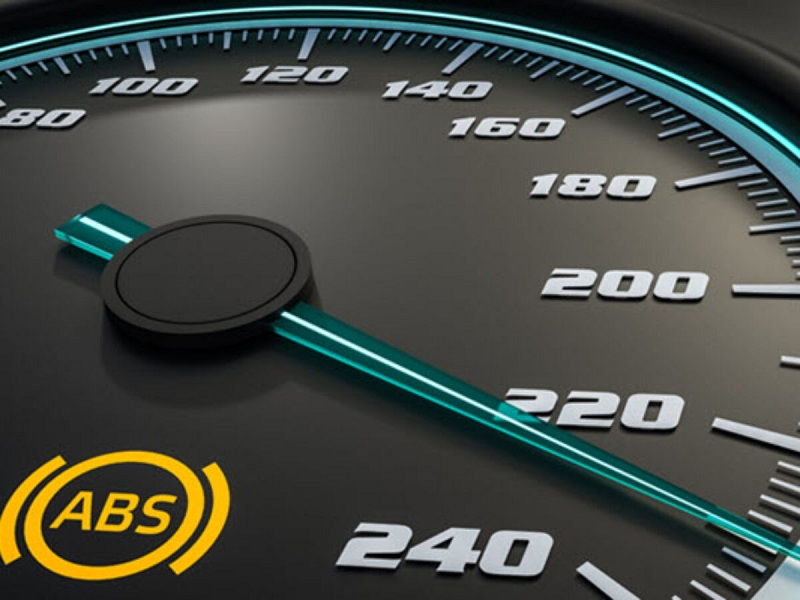
If the ABS (Anti-Lock Braking System) warning symbol illuminates on your Toyota’s dashboard, it indicates a problem with the ABS.
The ABS is a safety system that prevents the wheels from locking up during hard braking, enhancing control and stability. When the ABS warning light is on, it means there may be an issue with the system, potentially compromising its functionality.
Understanding the ABS System
The ABS system consists of various components, including wheel speed sensors, hydraulic valves, and an ABS control module.
When you apply the brakes, the ABS control module monitors the wheel speed sensors to detect any wheel lock-up. If it detects potential lock-up, it modulates the brake pressure to the affected wheel(s) to maintain traction and prevent skidding.
Possible Causes of ABS Warning
Here are some potential causes for the ABS warning symbol to illuminate on your Toyota’s dashboard:
- Wheel speed sensor issues: A malfunctioning wheel speed sensor can lead to inaccurate readings, triggering the ABS warning light.
- ABS control module malfunction: A fault in the ABS control module can prevent the system from functioning correctly, causing the warning light to activate.
- Hydraulic system problems: Issues with the hydraulic valves or pump can affect the ABS system’s operation and result in the warning light illuminating.
Steps to Take When ABS Warning Light Appears
See Also: Toyota 4runner Catalytic Converter
If the ABS warning light illuminates on your Toyota dashboard, follow these steps:
- Check the brake fluid level: Ensure that the brake fluid level is within the recommended range. Low brake fluid can trigger the ABS warning light.
- Restart the vehicle: Sometimes, the ABS warning light may illuminate due to a temporary glitch. Turn off the engine, wait a few seconds, and then restart the vehicle to see if the light goes off.
- Test the brakes: Safely test your vehicle’s brakes by applying moderate pressure on the brake pedal while driving at a safe speed. If the brakes feel abnormal or if the warning light persists, it is advisable to seek professional assistance.
- Visit a professional technician: ABS systems can be complex, and it is recommended to visit a certified mechanic or dealership to diagnose and repair any issues with the ABS system.
Toyota Dashboard Symbols and Meanings
Airbag System Warning
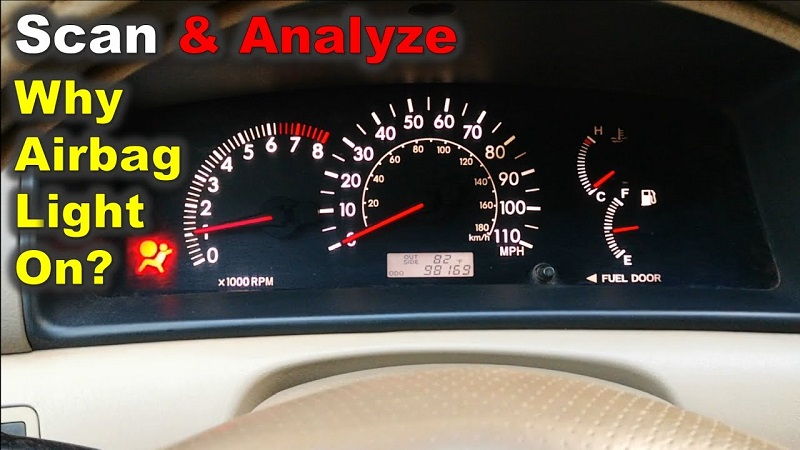
The airbag system warning symbol on your Toyota’s dashboard, typically depicting an inflated airbag, indicates a potential problem with the airbag system.
The airbags are crucial safety features that help protect occupants during a collision. When the airbag system warning light is illuminated, it signifies a malfunction that may prevent the airbags from deploying in the event of an accident.
Understanding the Importance of Airbags
Airbags are designed to supplement seat belts and provide an additional level of protection during a crash. They deploy rapidly upon impact, cushioning the occupants and reducing the risk of severe injuries, particularly to the head and chest.
Possible Causes of Airbag System Warning
Here are some potential causes for the airbag system warning symbol to illuminate on your Toyota’s dashboard:
- Faulty airbag sensors: The airbag system relies on various sensors to detect a collision and trigger the deployment of the airbags. Malfunctioning sensors can prevent the airbags from deploying or cause them to deploy unexpectedly.
- Wiring or connector issues: Damaged or disconnected wiring or connectors in the airbag system can disrupt communication between the components and trigger the warning light.
- Module or control unit malfunction: A fault in the airbag module or control unit can prevent the system from operating correctly, leading to the warning light activation.
Steps to Take When Airbag System Warning Light Appears
If the airbag system warning light illuminates on your Toyota dashboard, follow these steps:
- Check the seat belts: Ensure that all occupants are wearing their seat belts properly. Although the airbag system warning light is on, the seat belts remain the primary safety restraint.
- Inspect the wiring and connectors: Visually inspect the wiring and connectors related to the airbag system for any signs of damage or disconnection. If you notice any issues, have them inspected and repaired by a professional.
- Visit a professional technician: Airbag systems require specialized knowledge and equipment to diagnose and repair. It is crucial to visit a certified mechanic or dealership to address any issues with the airbag system.
Toyota Dashboard Symbols and Meanings
Fuel Level Warning
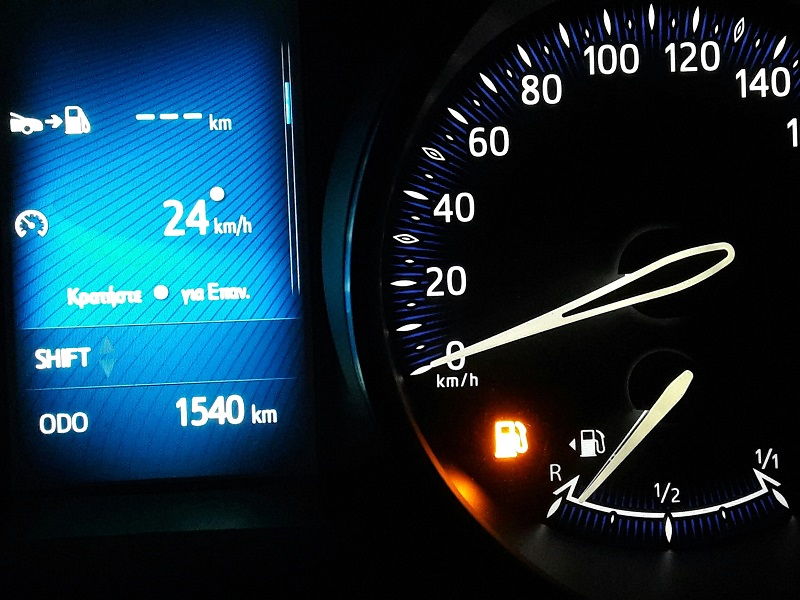
When your Toyota’s fuel level is low, a symbol resembling a gas pump will appear on the dashboard. This warning serves as a reminder to refuel your vehicle.
Running out of fuel can leave you stranded and potentially cause damage to the fuel system. It is essential to manage your fuel level effectively to ensure uninterrupted operation of your vehicle.
Importance of Maintaining Adequate Fuel Level
Maintaining an adequate fuel level is crucial for several reasons:
- Preventing fuel system damage: Running out of fuel can lead to fuel pump failure or sediment clogging in the fuel lines, resulting in costly repairs.
- Ensuring vehicle operation: A sufficient fuel level ensures continuous fuel delivery to the engine, allowingit to run smoothly and efficiently.
- Emergency situations: Having enough fuel in your vehicle is important in case of emergencies or unexpected detours, ensuring you have enough range to reach your destination or find a nearby gas station.
Tips for Managing Your Fuel Level
Here are some tips to help you effectively manage your Toyota’s fuel level:
- Monitor fuel gauge regularly: Pay attention to your vehicle’s fuel gauge and familiarize yourself with how much fuel is typically consumed for different driving conditions. This will help you gauge when it’s time to refuel.
- Plan ahead for long drives: If you’re embarking on a long journey, map out gas stations along your route to ensure you have enough fuel stops planned. It’s better to be prepared than risk running out of fuel in remote areas.
- Follow manufacturer recommendations: Refer to your Toyota’s owner’s manual for specific recommendations on fuel type and fueling practices. Using the recommended fuel and following the manufacturer’s guidelines can optimize fuel efficiency.
- Consider using fuel apps: Utilize smartphone apps or websites that provide real-time information on nearby gas stations, fuel prices, and available amenities. This can help you plan your refueling stops more efficiently.
- Keep an emergency supply: It’s a good idea to keep a small emergency supply of fuel, such as a portable fuel container, in case of unforeseen circumstances. However, always follow local regulations and safety guidelines when storing or transporting fuel.
Toyota Dashboard Symbols and Meanings
Temperature Warning
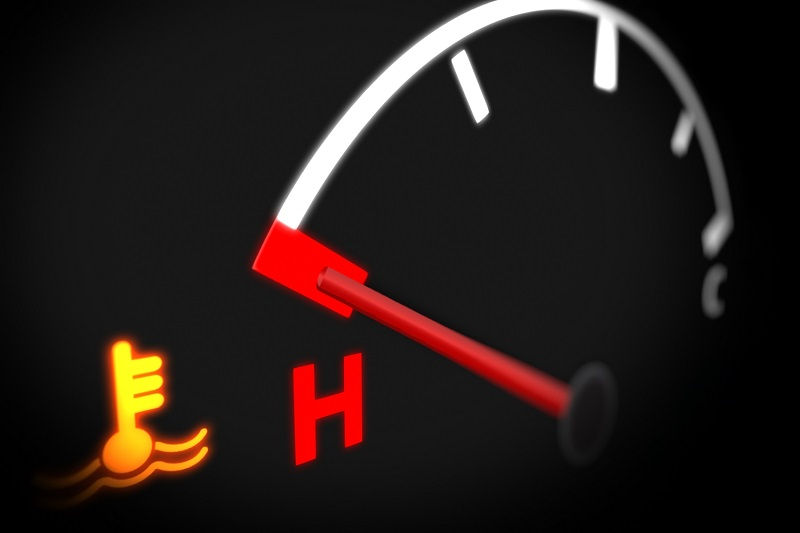
If you see a symbol resembling a thermometer on your Toyota’s dashboard, it signifies a problem with your vehicle’s engine temperature.
See Also: Toyota Tacoma Catalytic Converter
Engine overheating can lead to severe damage and should be addressed promptly to prevent costly repairs and potential breakdowns.
The temperature warning symbol serves as an early warning sign, allowing you to take appropriate action before the situation worsens.
Possible Causes of Temperature Warning
Here are some potential causes for the temperature warning symbol to illuminate on your Toyota’s dashboard:
- Coolant system issues: Problems with the coolant system, such as a coolant leak, malfunctioning thermostat, or a faulty radiator, can cause the engine to overheat.
- Malfunctioning radiator fan: The radiator fan helps cool the engine by drawing air through the radiator. If the fan fails to operate correctly, it can lead to overheating.
- Water pump failure: The water pump circulates coolant throughout the engine. If the water pump fails, coolant flow may be insufficient to regulate the engine’s temperature.
Steps to Take When Temperature Warning Light Appears
If the temperature warning light illuminates on your Toyota dashboard, follow these steps:
- Pull over safely: As soon as it is safe to do so, pull over to a safe location away from traffic. Continuing to drive with an overheating engine can cause severe damage.
- Turn off the engine: Once stopped, turn off the engine immediately to minimize further heat buildup and potential damage.
- Allow engine to cool: It is crucial to give the engine sufficient time to cool down before attempting any inspections or repairs. Opening the hood while the engine is still hot can result in burns.
- Check coolant level: Once the engine has cooled, check the coolant level in the reservoir. If it is low, add coolant gradually until it reaches the recommended level. Be cautious not to add coolant to a hot engine as it can cause rapid boiling and injury.
- Inspect for leaks: Visually inspect the engine and cooling system components for any signs of coolant leaks, such as puddles or stains. If you notice a leak, have it repaired by a professional.
- Check radiator fan functionality: Start the engine and let it idle while observing the radiator fan. The fan should engage and start spinning when the engine reaches operating temperature. If the fan does not activate, there may be an issue with the fan motor or its control system.
- Visit a professional technician: If the temperature warning light persists or if you are unable to identify and resolve the issue, it is important to seek professional assistance. A qualified mechanic can diagnose and repair any underlying problems to prevent further overheating.
Toyota Dashboard Symbols and Meanings
Seat Belt Reminder

The seat belt reminder symbol serves as a reminder for both the driver and passengers to buckle up. Seat belts are crucial safety restraints that significantly reduce the risk of injury or fatality in the event of a collision.
The seat belt reminder symbol typically resembles a person wearing a seat belt and is an essential feature to promote safe driving habits.
Importance of Wearing Seat Belts
Wearing seat belts is vital for several reasons:
- Occupant safety: Seat belts help restrain occupants and prevent them from being ejected from the vehicle during a collision.
- Reduced injury severity: Seat belts distribute the force of a collision over the strongest parts of the body, reducing the risk of severe injuries to vital organs.
- Secondary collision prevention: In the event of a collision, seat belts keep occupants in their seats, reducing the likelihood of secondary collisions with vehicle interiors or other passengers.
Actions to Take When Seat Belt Reminder Activates
If the seat belt reminder symbol illuminates on your Toyota’s dashboard, follow these actions:
- Ensure all occupants are wearing seat belts: Confirm that all passengers, including yourself, are wearing their seat belts correctly. Properly fastened seat belts should lie snugly across the lap and shoulder, avoiding any slack.
- Secure any loose items: Make sure any loose items within the vehicle are properly secured to prevent them from becoming projectiles during sudden stops or collisions.
- Reinforce the importance of seat belt usage: As a driver, it is essential to encourage and enforce seat belt usage among all occupants, regardless of their seating position.
- Monitor seat belt usage: Regularly check that all occupants remain properly secured with their seat belts throughout the journey. This is particularly important for passengers in the rear seats, where compliance may be lower.
In conclusion, understanding the symbols on your Toyota vehicle’s dashboard is crucial for maintaining its performance and your safety.
By familiarizing yourself with these symbols and their meanings, you can quickly identify potential issues and take appropriate action. Remember, always consult your Toyota owner’s manual for specific symbol interpretations and recommended actions.
Stay informed, stay safe, and keep your Toyota running smoothly!
See Also: 2007 Toyota Camry Catalytic Converter
Related video of Toyota Dashboard Symbols and Meanings: A Comprehensive Guide for Car Owners
- Lifted Ford Diesel Trucks for Sale - December 15, 2025
- Lifted GMC Diesel Trucks for Sale - December 14, 2025
- Lifted Chevy Diesel Trucks for Sale - December 13, 2025
